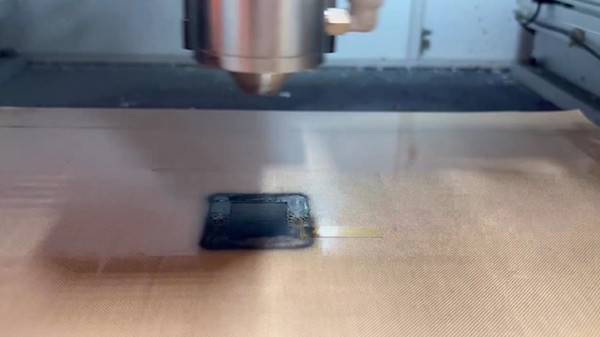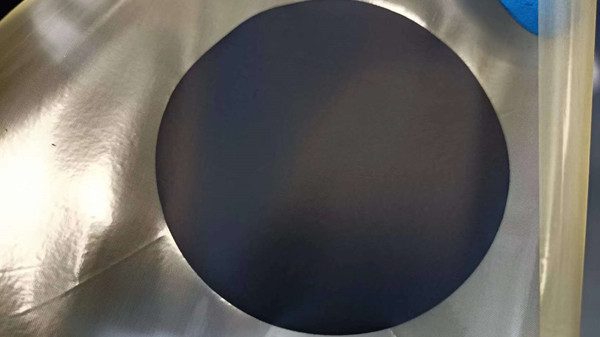AEM Membrane Electrode and Ultrasonic Spraying
AEM membrane electrode: current situation, challenges and the innovative power of ultrasonic spraying
As the core component of AEMWE (anion exchange membrane water electrolysis), the membrane electrode is composed of anion exchange membrane, ionomer, anode and cathode catalyst layers, and porous transport layers. MEA (membrane electrode assembly) provides a key place for electrochemical reaction and multiphase transfer, which directly affects the performance and durability of alkaline water electrolysis. Therefore, the development of high-performance and low-cost MEA is the key to promoting the large-scale application of AEM water electrolysis. There are two main methods for MEA preparation: CCS and CCM.
In the CCS method, the electrocatalyst slurry is directly deposited on the gas diffusion layer, and then sintered to form an electrode. The anion exchange membrane is encapsulated in the gas diffusion layer or between the electrodes to form a membrane electrode assembly. This method is relatively simple to prepare and suitable for large-scale production. But the disadvantages are also obvious. The catalyst is directly deposited on the gas diffusion layer, which makes it difficult for the membrane and the catalyst layer to fully contact, greatly affecting the activity of the catalyst.
The CCM method first makes a mixture of electrocatalyst and ionomer into a slurry, which is then coated on both sides of the anion exchange membrane by spraying, spin coating, etc., and then placed between the gas diffusion layers after drying, and assembled by mechanical or hot pressing. MEA prepared based on CCM has higher catalyst utilization and faster electrochemical reaction rate. However, the CCM manufacturing process is complicated. For membranes with a thickness of less than 20μm, some catalyst ink solvents will dissolve the membrane, and there is membrane creep, which reduces the durability of the membrane. When using non-precious metal-based electrocatalysts, which is better, CCS-based MEA or CCM-based MEA, needs in-depth research to clarify the most suitable MEA manufacturing method and non-precious metal-based materials.
In recent years, self-supporting catalytic electrodes have attracted much attention due to their surface-modified porous carriers. Its self-supporting catalytic layer consists of a modified or enhanced porous carrier, usually without ionomers (unlike CCS), and the catalytically active substances are directly grown in situ on the conductive substrate. Compared with traditional powdered catalysts, self-supporting electrodes avoid the use of polymer binders to prevent them from inhibiting bubble diffusion and exposing active sites. This tight anchoring greatly improves the mechanical stability of the self-supporting electrode, ensures the electron transfer efficiency between the active material and the substrate, and is more suitable for alkaline water electrolysis with high current density and long-term operation. Common preparation methods include electrodeposition and hydrothermal dissolution.
In this process, Cheersonic ultrasonic spraying technology shows unique advantages in the preparation of AEM membrane electrodes. In the CCM method of coating catalyst and ionomer slurry, Cheersonic ultrasonic spraying technology can atomize the slurry into uniform and fine droplets. Compared with traditional spraying, the coating thickness and uniformity can be more accurately controlled to ensure that the catalyst and ionomer are evenly distributed on the membrane surface, improve the catalyst utilization rate, and enhance the electrochemical reaction activity. At the same time, for the preparation of self-supporting electrodes, when spraying the modified material on the surface of the porous carrier, this technology can make the modified material adhere tightly and evenly distributed, optimize the performance of the porous carrier, promote the better in-situ growth of the catalytic active substance, and improve the overall performance of the self-supporting electrode, providing strong support for the efficient preparation and performance improvement of AEM membrane electrodes, and helping AEM water electrolysis technology to reach new heights.
About Cheersonic
Cheersonic is the leading developer and manufacturer of ultrasonic coating systems for applying precise, thin film coatings to protect, strengthen or smooth surfaces on parts and components for the microelectronics/electronics, alternative energy, medical and industrial markets, including specialized glass applications in construction and automotive.
Our coating solutions are environmentally-friendly, efficient and highly reliable, and enable dramatic reductions in overspray, savings in raw material, water and energy usage and provide improved process repeatability, transfer efficiency, high uniformity and reduced emissions.
Chinese Website: Cheersonic Provides Professional Coating Solutions



